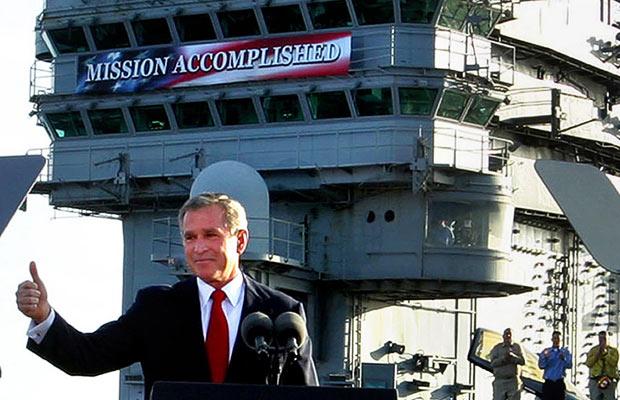
What was 2024 like?
Everybody experienced 2024 differently.
I experienced quite a bit of variation.
Spice World
In January, I spent a few weeks touring the Open Source Software (OSS) community in San Francisco. I simulated what it would be like to live and work there. Could I do the best work of my life in that environment? I spent many nights screaming over punk music at Zeitgeist, a few weekends in slush piles with people just so absolutely jazzed to talk about leveraging integrated B2B telephonic technology in the cloud, a couple of evenings with good friends down the Caltrain line, delightful walks in the rain, and a few more evenings the far corners of dimly lit office buildings. I saw multiple versions SF. It’s a place of extreme gradients. On the 30th floor of a building, I’m taking in a lecture on a breakthrough you’ll be reading about in a few months, and, thirty minutes later, just steps from the door, a man hugs an iron grate for what heat he can get, blasted out of his mind, escaping trauma and adding to it if he ever wakes up. The disparity is jarring.
I took in the Marketing Analytics Summit (MAS) in Phoenix through different eyes. I saw the yawning gap between tool users, mainline marketing practitioners, data practitioners, consultants, leaders, and agency presidents as wider than a lack of shared vocabulary. There are disjointed incentive networks. As such it was a fantastic event, terrific to catchup with so many old friends and to make more. Phoenix in June is hot. Happily, I went onto coffee on May 17 and stayed on it through MAS. Nothing screams yum like chugging hot coffee to get you through hours 14 to 17 at a MAS while it’s 46c outside. I wouldn’t crash off coffee until September 25. And a good thing too because of Cuba.
I went to Cuba for a wedding. Delicious coffee. Beautiful sand, people, and air. Wonderful company. Fantastic ceremony. I croaked Spanish. The locals sang it. I didn’t get to see the real Cuba. While I did leave the resort a few times for walks into town, I was on the other side of a perimeter, in something of a special economic zone without, perhaps, a formal designation as such. The version I saw left an impression which would collide with the next event.
I’m still making sense of the The Academy of Management Conference (AOM) in Chicago. If you want to talk about a contrast between two events: experiencing Cuba and then experiencing AOM, it was an exercise in extremes. Talk about gradients! Learning is a bit like radiation poisoning. A bright flash of light has an immediate effect. You might a feel a hot flash for a moment and get a headache. Then you feel fine for awhile, as though nothing happened. And it’s only later that deep, structural, changes start to be realized. As though it’s your subconscious notifying you that changes have occurred. I’ll be sharing more in 2025 as more of it makes sense.
After November 1, I modified my Toronto programme, going quite a bit wider into the technology, GAI, and business scenes. Structurally, in Toronto, there were four broad categories of events forming a 2×2: AM and PM, and Panelled and Unpanelled.
2×2
AM events generally have better signal. The attendees are generally serious, the conversations often don’t compete with amplified sound, and the venues tend to have more space to move around.
PM events generally have poorer signal. The attendees are far more heterogenous, one often has to shout over amplified music, and venues tend to be cramped.
There are several formats for Panelled events: a series of speakers, a panel, or a single keynote. Some have A/V support, but most don’t need any. Sometimes it is not clear if the panel is the draw, or if the panel is a surface for the pizza sponsor to say a few words. This is a fantastic circuit for new speakers who are just learning to present. It’s service. It’s social capital accumulation. We need that. Chances are you’re there for free, and you aren’t entitled to anything, so take it in, think, and clap.
Unpanelled events are sometimes labelled as Mixers. A true Mixer is one in which you have social license to do rapid three minute hits as you work a room. Participants generally circulate clockwise or counter-clockwise, as though physically mixing through an environment. This aspect doesn’t generally appear to be known in Toronto. So, one has to continuously make eye contact with stragglers, pull them into a cluster, and then you have to extricate out of the cluster to hit the next in order to get the same circulation effect.
Putting it altogether: AM Panelled events were consistently fantastic. With a few exceptions, PM unpanelled events were the most heterogenous with the widest variance. If you’re coming in from out of town, you generally have to attend five PM unpanelled events for every AM event.
The Problem with Problem Identification
The problem I have with listening to problems is that it is difficult to discern what is a real problem and what is not. And there’s a confound involved entirely on my side of the exchange. Often, when I’m listening to a stream of text and watching a sequence of facecrime, I’m trying to make sense of both the words and accompanying signal with them, trying to understand what is intentional signal and what is not.
The distinction between venting about an irritation, because what are you gonna do about it, and communicating a problem that must be addressed, isn’t always evident. There’s a bit of Goffman in this I suppose? Maybe a little bit of Berne? In a way, maybe, sometimes, the presentation of a problem is itself a self-contained solution to that problem: “Well I complained. Mission accomplished!”

Problems aren’t always problems: they could be statements of defeat or declarations of premature victory. And not all problems are interesting. Not all Need-Solution pairs are viable. The meta-problem with that is the accompanying Negative Expected Value (NegEV) in communicating negative feedback. It’s cheaper, to you personally, to keep your mouth shut — even if it is more expensive, collectively, for you to share your feedback courageously, with compassion and kindness.
Tariffed
There are four large divisions of the Canadian economy: primary, secondary, tertiary, and quaternary. The primary sector accounts for something like 40% of our exports: hydrocarbons, ore, and wheat. Our secondary sector, manufacturing or any kind of physical transformation: refined petroleum, metals, car parts, cars account for something like another 40%. Our tertiary sector, services, along with quaternary knowledge and technology, make up the rest. Exports make up about a third of Canadian GDP. Much of the Canadian economy is deeply integrated with the United States as an artifact of physical and social geography.
Some Canadian entrepreneurs are engaged in the secondary sector. They make real things out of physical matter. This just blows me away. I grew up during a particularly rough time for manufacturing, so I never perceived it as a growth sector. But they do it. And it’s important for Canada to be able to make physical things. Ever since November, many have paused decisions on where and what to build and locate where. The chill started long before a ramp up in rhetoric in December.
What we aren’t talking about
We aren’t talking about the effects of the pandemic.
Institutions are still stressed and this drives a strong anti-incumbent sentiment. While it isn’t quite the late 1300’s in terms of degraded judgement and institutions, some decay is noticeable. The difference between say, 2014 and 2019 is marked from 2019 and 2024. Even 2022 is quite a bit different from 2024.
There’s been a lot of change in a very short period of time. And that creates quite a bit of a reaction in a very short period of time.
COVID-19 wasn’t on the magnitude of the Black Death. We didn’t lose a third to a half of the population. It affected different pockets of the planet in different ways. A lot of people lost friends and family. There are ongoing effects that, in several ways, are going unaddressed. A lot of people were just barely on the ladder when COVID visited, and some were knocked off. A few got back on. Many didn’t. That spike in vulnerability, combined with the perception that institutions just aren’t responding, contributes to incremental stress. When institutions don’t respond, they become vulnerable to severe disruption. And part of the crunch that’s happening in Canada is all after-glow from 2020-2022.
A lot has changed and people don’t like it. And they’re mad about it. In Toronto, the infrastructure didn’t keep up with all the people that were added after COVID. In the United States, the social infrastructure didn’t keep up with all the people that came. A lot of people feel threatened by AI. They feel threatened by elites. They feel threatened.
That tension is always resolved, one way or another.
A lot of people are heading into 2025 in a darker, meaner, less considerate place.
The Solution of Solution Identification
There are solutions. We got ourselves here. We can make things somewhat better in the short run. We can make things a lot better in the long run. It’s just going to take a little bit of thrash to get there.
I start with AI. Some people are overhyping AI because they know better and have an incentive to do so. Some people are overhyping AI because they don’t know any better — they’re just excited and want to share their excitement. There’s some reason to believe, but not quite as much as the overhypers would have you believe, or not anything like the doomsday skeptics would have you believe. There are a few solutions within AI as a tool.
Those that are too afraid, too overwhelmed, too busy to explore the solution set won’t find any. Those that are afraid and still explore will find solutions. AI is already useful for exploring and weighing solutions. I expect that some people, in 2025, will use AI to find better solutions, faster. And, I expect that some people with an interest in slowing down those solutions, won’t think to use AI to slow it down. They’ll likely be at a strategic disadvantage.
2025
Just as 2019 didn’t have a 1919 feeling to it, I can’t say that 2024 has a 1913 feeling to it. That is to say: I could be suprised.
I have to squint to find solid causes for hope: we’re able to manufacture electricity just by printing it, Canada is going hard into CANDU reactors, we’re friend-shoring harder than ever, more people are investing in themselves, Canada is adjusting its housing and transport policies at the rate that it adjusts, inflation is down and investment is up. There’s a lot that is going right. That isn’t silver in those dark clouds: it’s lightning. And that can be useful.
It’s for those reasons I predict that we’re going to experience a lot of variation, differently, in 2025.
Should be fun….?
